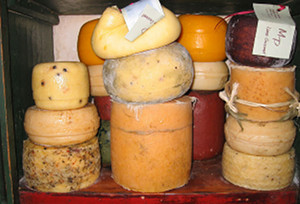Artisanal Is The New Organic

(Barnaby)
There’s a burgeoning artisanal market in the U.S., where goods made by hand or in small batches–and marketed with lots of footnotes and descriptions of quality–are growing increasingly more popular. But why, and is it just a hipster lifestyle ingredient or an actual shift in the larger population?
Adam Sachs in Details looks at the phenomenon and suggests the growing interest in artisanal goods is partly a response to economic uncertainty: “When everything is falling apart, it helps to know how to put things together.” It may also be that hand-made represents a sort of “anti-bling” that, because of current attitudes toward wealth and spending, conveys higher value. And a trend watcher Sachs speaks with suggests that we’re looking for a way to return a sense of human scale to the world, after the double-punches of the industrial and digital revolutions.
Finally, he notes that sometimes it also just simply delivers higher quality: better tasting food, more attention to detail, fewer lab-created chemical substitutes.
Sachs raises the question of what happens next as corporations wise up to the market-appeal of the artisanal label, but he doesn’t really explore that world too much.
Instead, he focuses on a dozen examples of great places to buy expensive things (this is Details, after all), which highlights the other consistent characteristic of artisanal stuff: it usually costs more. And maybe that’s the true allure of the artisanal for many–that just like luxury brands, what you’re really enjoying is the sense of exclusivity it can convey.
“Artisanal America” [Details]
Want more consumer news? Visit our parent organization, Consumer Reports, for the latest on scams, recalls, and other consumer issues.

